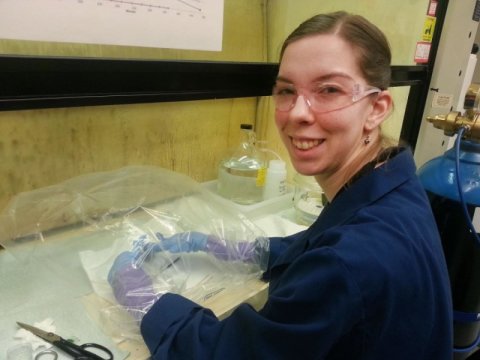A Washington State University research of the chemistry of technetium-99 has enhanced comprehension of the challenging nuclear waste and could result in better clean-up techniques.
The work is recently reported and was headed by John McCloy, an associate lecturer in the School of Mechanical and Materials Engineering, and chemistry graduate student Jamie Weaver. Scientists from Pacific Northwest National Laboratory (PNNL), the Office of River Protection and Lawrence Berkeley National Laboratory association also joined the study.
Technetium-99 is a byproduct of plutonium weapons production and is considered a major U.S. challenge for environmental clean-up. At the Hanford Site nuclear intricate in Washington state, there are around 2,000 pounds of the element dispersed within around 56 million gallons of nuclear waste in 177 storage tanks.
The U.S. Department of Energy is in the process of building a waste treatment plant at Hanford to immobilize hazardous nuclear waste in glass. But scientists have been stymied as not all the technetium-99 is included into the glass and volatilized gas must be recycled back into the melter system. The element can be highly soluble in water and moves conveniently through the environment when in specific forms, so it is considered a major environmental hazard.

As technetium compounds are challenging to work with, prior research has employed less volatile substitutes to try to comprehend the substance’s behaviour. Some of the compounds themselves have not been studied for 50 years, says McCloy. “The logistics are highly challenging,” he says. The WSU work was performed in PNNL’s exceedingly specialized Radiochemical Processing Laboratory and the radiological annex of its Environmental Molecular Sciences Laboratory.
The scientists conducted fundamental chemistry results in better comprehension technetium-99 and its special challenges for storage. They determined that the sodium forms of the element behave much distinctly than other alkalis, which possibly is related to its volatility and to why it may be so reactive with water.
“The structure and spectral signatures of such compounds will support in refining the understanding of technetium incorporation into nuclear waste glasses,” says McCloy. The scientists also expect the work will contribute to the study of other poorly understood chemical compounds
Filed Under: News


Questions related to this article?
👉Ask and discuss on Electro-Tech-Online.com and EDAboard.com forums.
Tell Us What You Think!!
You must be logged in to post a comment.